Grant Wood’s American Gothic is a world-famous painting, so much so that it is considered to be the most misappropriated painting in art history! But do you know its history and hidden meanings?
In what context was this painting created? Who are the two characters? Why does it have the title “American Gothic”? Analysis of a masterpiece…
Summary
In what context did Grant Wood paint this canvas?
Grant Wood (1891 – 1942) was an American painter known for his rural Midwest representations. After growing up on a farm in Iowa, he trained in the visual arts and then went to study in Europe in the 1920s. This trip allowed him to discover Flemish paintings, the German Renaissance and the New Objectivity, an artistic movement that developed in Germany and succeeded Expressionism.
In 1930, he painted American Gothic, at the very beginning of the Great Depression, the economic crisis that followed the stock market crash of 1929 and plunged the American rural world into great poverty.

Who are the characters depicted in this painting?
Mystery surrounds the two figures in the painting: who are the woman with the worried look and the man with glasses staring at us? Are they a couple or friends? The man is older, so it is possible that we are looking at a father and his unmarried daughter.
The man is dressed in overalls but also in a black jacket, while the woman is wearing a piece of jewellery: they have made an effort to dress up, perhaps for the painter or to celebrate an important moment in their lives.
To create them, Grant Wood had his dentist Dr McKeeby and his sister Nan pose.
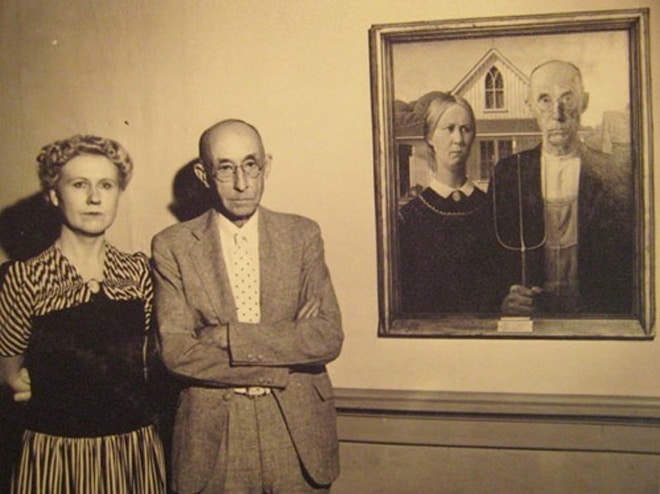
Why the title “American Gothic“?
When the artist saw an unusual house in Iowa with an upper window with pointed arches usually found in churches, he was inspired to paint this picture with the kind of people he imagined would live inside.
The title ‘American Gothic’ is therefore a reference to the neo-Gothic architectural style of this house.
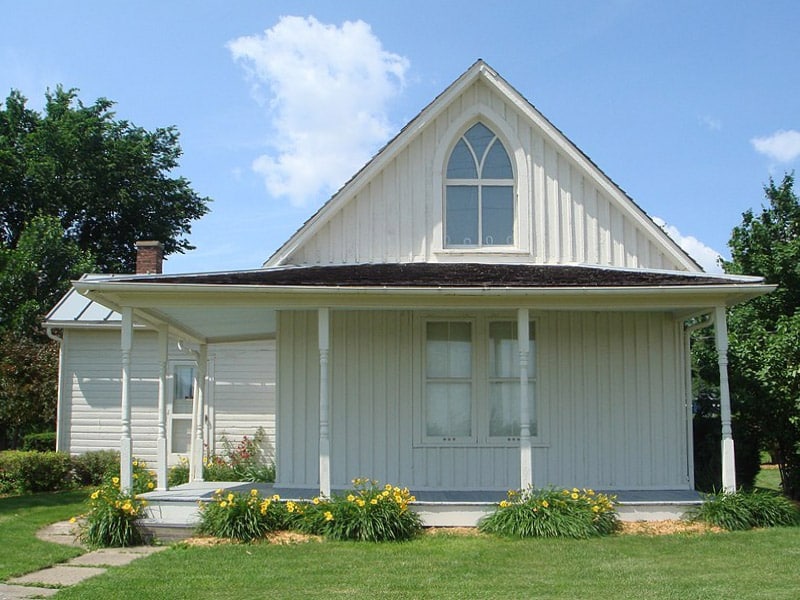
What does the fork represent?
The fork is the third character in this painting. If you look carefully, you will see it on the man’s overalls, on his face and on the upper window of the house.

While a peasant would hold it down to avoid an accident, here it is facing the viewer. Several interpretations have been put forward: it could be a way of preventing the devil from entering the house, or it could be an evocation of sexuality considered perverse in the Midwestern society inherited from a certain puritanism.
Unless, by this gesture, the man is telling us “No entry” to protect the secrets kept in this house, whose closed curtains in the middle of the day suggest that something is being kept from us…
Another interpretation: this dark atmosphere, associated with the worried look of the woman dressed in a black dress, evokes the mourning of a certain idea of America, lost in the serious economic crisis of the 1930s.
The reception of the painting
Immediately after its premiere, the painting had a mixed reception. Iowans saw it as a caricature of rural life and were angry at being portrayed as ‘pinched, grimacing, fanatical puritans’. However, Grant Wood has always defended himself against this interpretation: for him the painting is a tribute to the rural population of the Midwest.
The artist’s sister, Nan Wood Graham, was made to look ugly by the painting, which led to a family dispute!
American Gothic was successful in the art world: exhibited at the Art Institute of Chicago, the painting won a bronze medal and a $300 prize. The painting was featured in newspapers and quickly circulated throughout the country. In 1934, Time magazine ran a full-page reproduction of the painting, which helped make it famous.
The many diversions of American Gothic
Today American Gothic is a world-famous painting that has been hijacked in many ways. To name but a few, it has been used in the series Dexter, in the Disney cartoon Mulan, in The Simpsons, in the credits of Desperate Housewives and on the cover of Time in 1994.
Yours truly couldn’t help but hijack it a few times too…
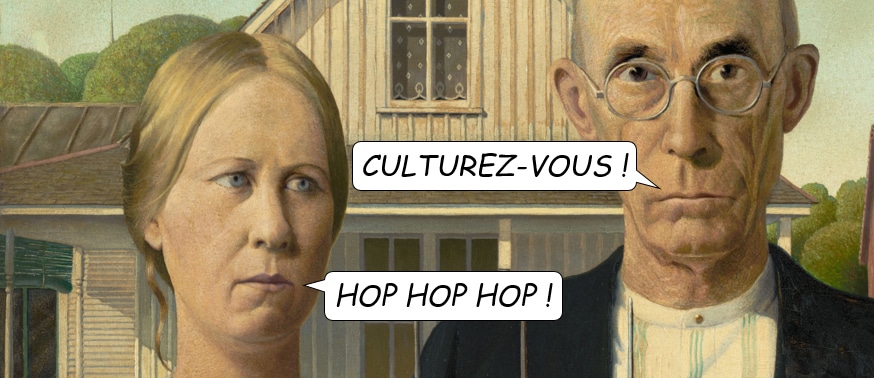
Where can we see this painting?
The work is part of the collections of the Art Institute of Chicago and it is therefore there that you should go from now on to be able to admire it!


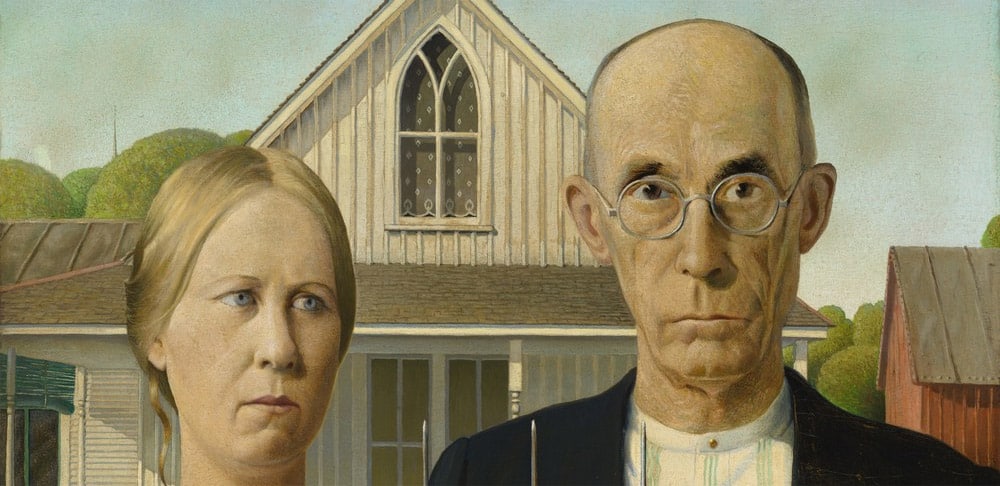

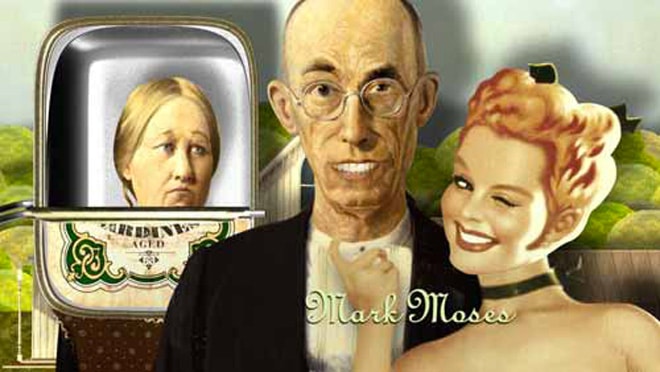





People reacted to this story.
Show comments Hide commentsJohn Singer Sargent (Church choir) portrait of Henry James – apparently – and in National Gallery London photos – in overhauls. His left hand de-fanged at the knuckles. Beside him, Alice James his sister having pushed psychologist brother William James out of the way.
Henry James\’ \”The Two Magics\” (\”The Turn of the Screw\” & \”The Covering End\”) are all established in the title \”American Gothic\”.
Sigmund Freud and Carl Jung saw a fountainhead of jokes: Dysentery, plague, Goths, Siegfried Line, NAZI, chok ful of nuts…or no one saw it and IT was written by ID.